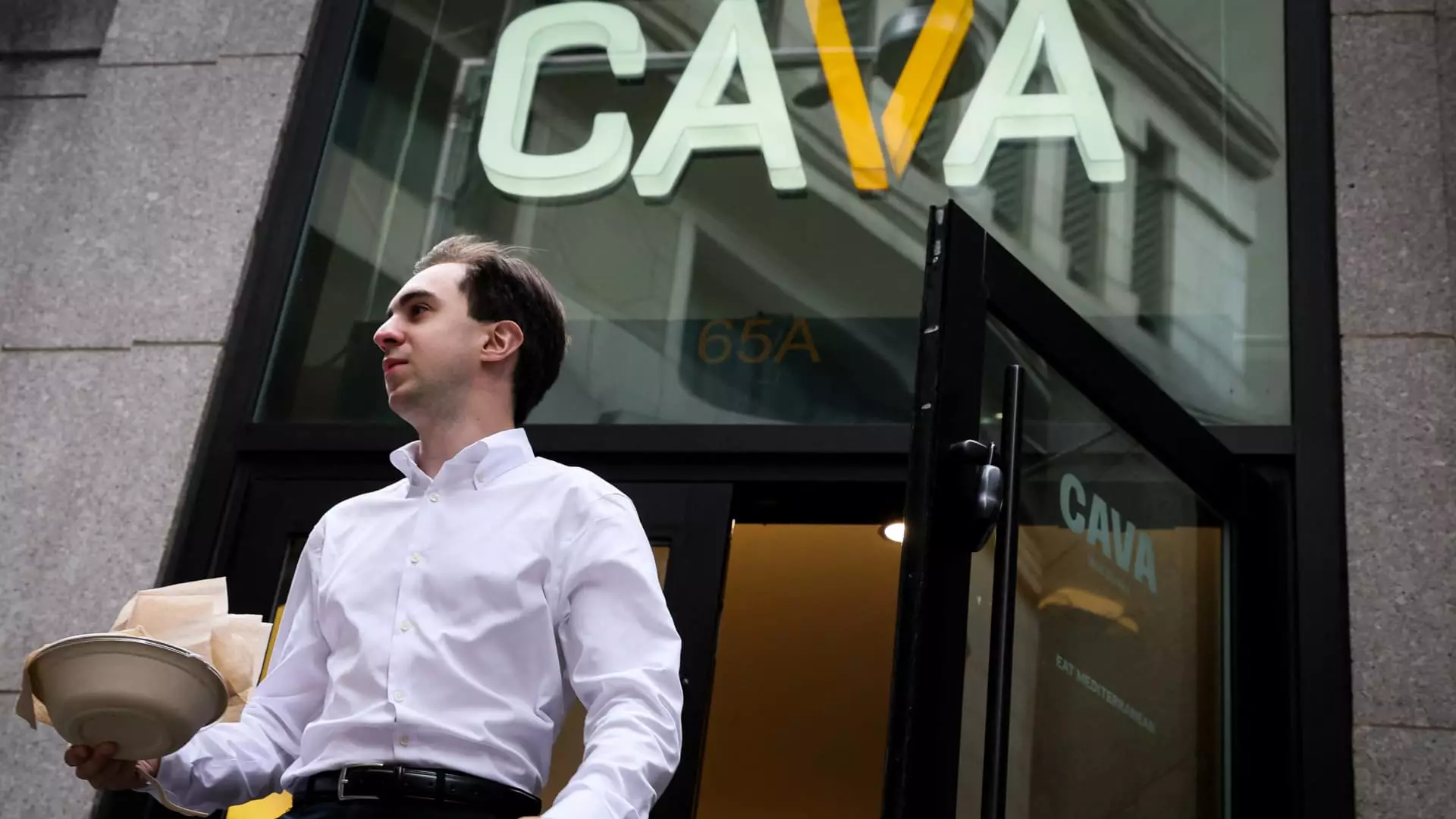In a world where the restaurant industry is grappling with an increase in consumer caution and economic uncertainty, Cava has emerged as a beacon of hope. The Mediterranean chain’s recent fiscal quarter report showcased a staggering 10.8% growth in same-store sales, outpacing analysts’ conservative projections by a noteworthy margin of 0.5%. This isn’t merely a stroke of luck; it showcases a strategic pivot and a firm grasp on consumer behavior that other chains have failed to exhibit. While rivals like Chipotle and Sweetgreen struggle with declining transactions, Cava’s impressive performance suggests a shift in market dynamics – one that savvy investors and industry leaders should closely monitor.
Consumer Behavior: From Fast Food to Premium Choices
Cava’s management has successfully tapped into a growing trend: the increasing willingness of consumers to “trade up” from fast food and down from casual dining to opt for fresher, healthier meals in an inviting environment. CFO Tricia Tolivar highlights a notable rise in premium item attachment, particularly for higher-priced products like gourmet pita chips and artisanal juices. This signals a narrative shift; consumers are not just cutting back on dining—they are adjusting their dining choices. Rather than scrimping altogether, they seem to be opting for elevated experiences that combine quality with value.
Such nuanced consumer behavior underscores the importance of understanding that individuals are increasingly discerning about where they spend their money. A chain offering both higher-quality items and a quick-service format can thrive even amidst economic headwinds, suggesting that consumer preferences are not monolithic but rather shifting toward health-conscious, catchy dining options.
Industry-Wide Concerns vs. Cava’s Confident Stance
While other industry giants are reporting declines—such as McDonald’s with a staggering 3.6% drop in same-store sales—Cava’s performance stands in stark contrast. The burger behemoth’s troubling figures reflect an entrenched anxiety within certain consumer demographics, particularly low- to middle-income groups feeling the pinch of inflation. Yet, Cava defies this trend, managing to cater successfully to a diverse income range.
Despite its excellent performance, Cava remains cautiously optimistic, sticking with its projection of a 6% to 8% increase in same-store sales for the fiscal year. This conservative outlook might cast shadows on its impressive quarterly results, leading to a 5% dip in stock during extended trading. However, context is vital: given the larger economic environment and the unpredictability brought on by factors such as tariffs linked to the previous administration, Cava’s decision to temper expectations seems prudent. It avoids the risk of overextension while building a strong case for future investments.
Numbers Tell a Story
Cava’s revenue hit an impressive $332 million this quarter, representing a 28% increase—an achievement that is particularly compelling as it marks a substantial revenue milestone of surpassing $1 billion on a trailing 12-month basis. The company is not just growing; it is maturing. And with a raised earnings before interest, taxes, depreciation, and amortization (EBITDA) forecast of $152 million to $159 million, the company seems poised to navigate the turbulence of the marketplace while maintaining a strong operational performance.
Investors should note these figures with cautious optimism. A forward-looking strategy that includes plans to open between 64 to 68 new locations indicates not just expansion but a calculated move to saturate markets where consumers have shown a clear preference for the Cava experience. It’s a strategy that could serve as a template for other restaurants seeking growth in a challenging landscape – suggesting that even in tough times, opportunities exist for those willing to adapt.
The Bigger Picture: A Playbook for Resilience
Cava’s story is one of resilience, adaptability, and strategic foresight. In a climate where many chains are tightening their belts, It has carved out a unique space by committing to quality and customer experience, reshaping how consumers approach their dining options. This could be a crucial lesson for the entire industry: adapt or risk being left behind.
While the broader restaurant sector may be embroiled in uncertainty, Cava’s performance stands as a testament to what an innovative approach can yield. With consumer preferences evolving and economic challenges persistently looming, Cava’s strategy not only offers a roadmap for resilience but also signals a shift in how success is defined in today’s dining landscape.

